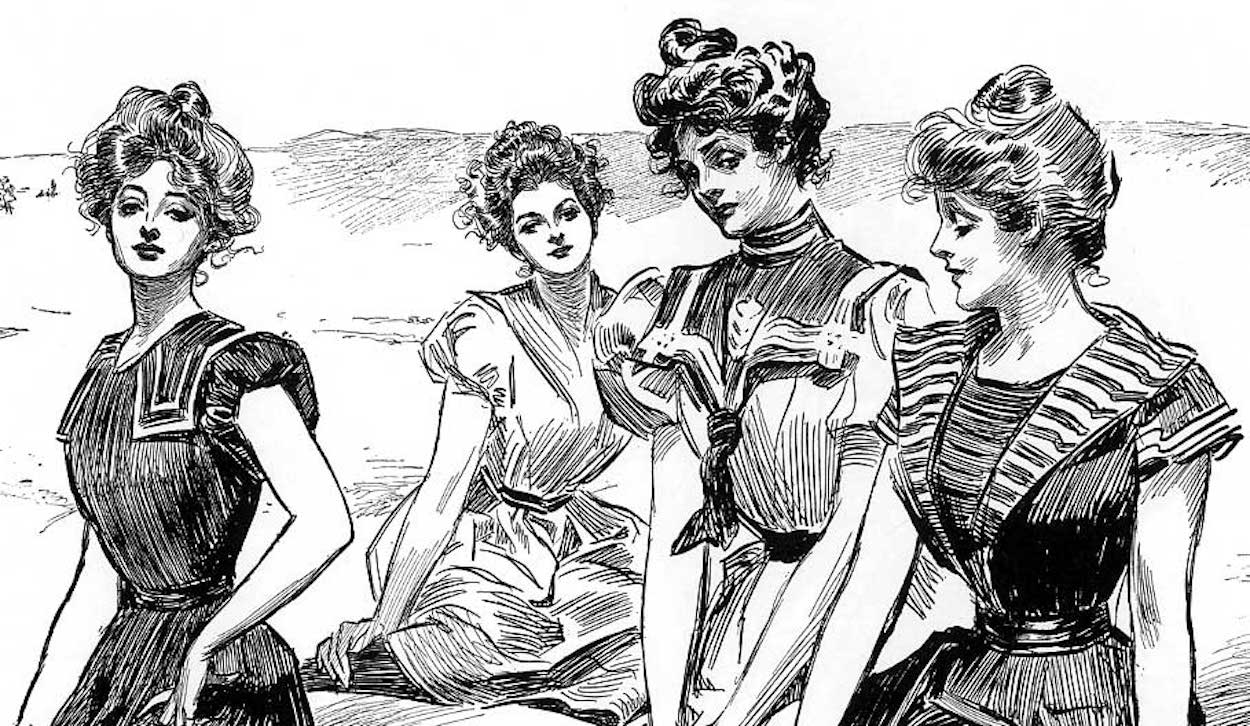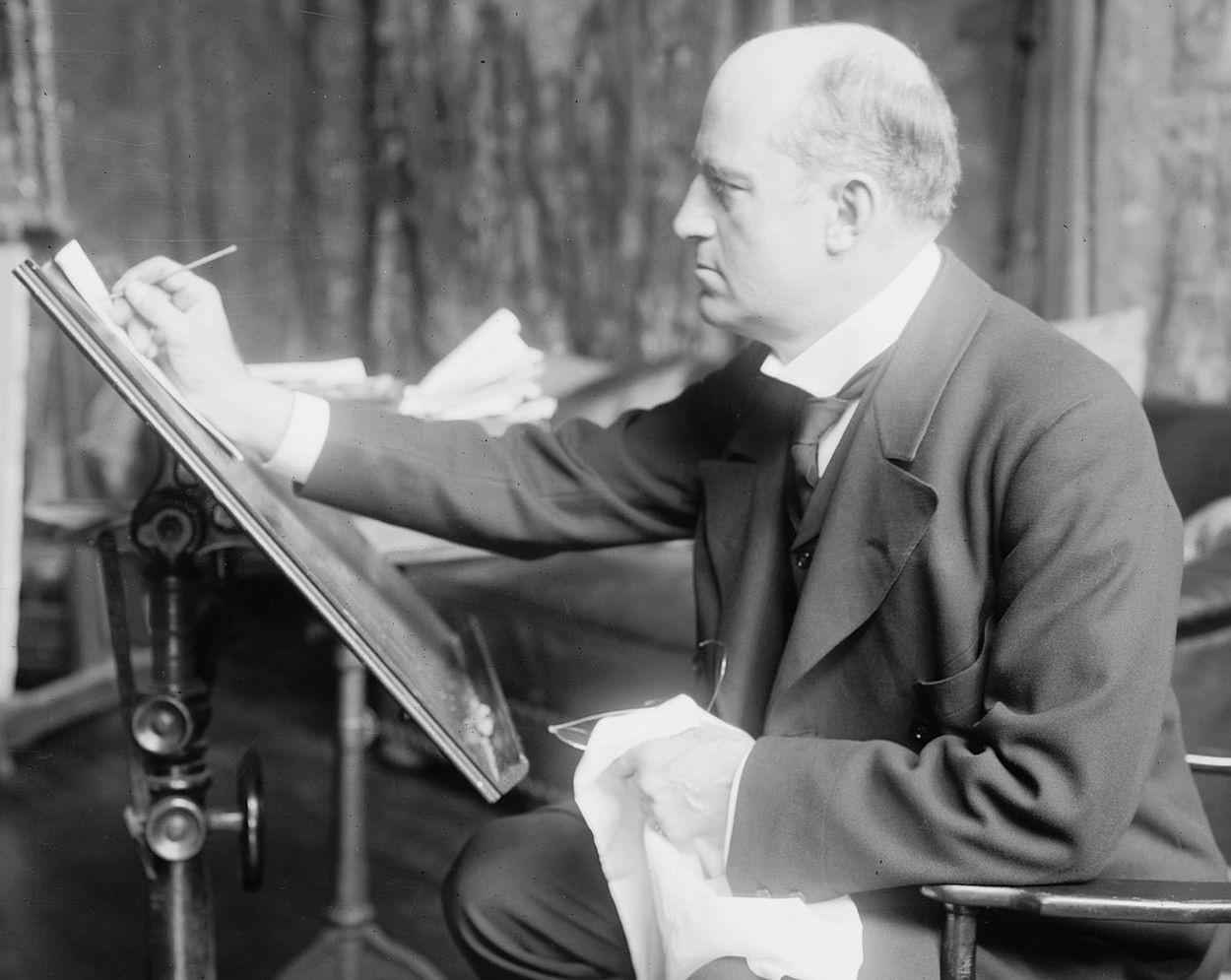Confident, stylish, and with volumes of perfectly coiffed hair, the Gibson Girl was an American icon of beauty at the turn of the twentieth century. Created by illustrator Charles Dana Gibson, this idealized young woman was modeled, in part, after Gibson’s stunning wife, Irene Langhorne Gibson. Like a Barbie doll, the Gibson Girl had a nearly impossible figure with voluptuous breasts, a slender waist, and wide hips. Unlike pin-up models, however, the Gibson Girl was always tastefully and modestly dressed.
Gibson introduced the Gibson Girl through his pen and ink drawings in the 1890s. His masterful depictions not only showcased an ideal vision of upper-middle class American femininity, but by occasionally placing a Gibson Girl in the company of the social elite, it allowed Gibson to provide subtle satire on high society and their idiosyncrasies.
Although refined and respectable, the Gibson Girl, like the young, increasingly independent women of their day, engaged in sports and leisure activities such as tennis, golf, hiking, and cycling. Unlike the New Woman of the time who campaigned for social and political reform, however, the Gibson Girl welcomed progress but did not actively advocate for it. She enjoyed romance, but did not rely on a man for happiness. Indeed, men were often portrayed as smitten and bumbling in her presence.
Gibson drew upon the women he encountered in daily life, a compilation of thousands of young American women. The Gibson Girl was hugely popular and featured in many leading magazines of the day. She inspired not only fashion and hairstyles, but was the subject of songs and operettas. Not as well-known was the Gibson Man, who Charles Gibson based on his friend, Richard Harding Davis, an American journalist and war correspondent. The Gibson Man was debonair and ruggedly handsome, the perfect counterpart to the Gibson Girl.
After World War I, popular interest in the United States shifted to flappers and jazz music. That, coupled with the introduction of color printing and photography in magazines, caused the exquisitely drawn Gibson Girl to fade away.
- Martina Keogan


 Charles Dana Gibson
Charles Dana Gibson